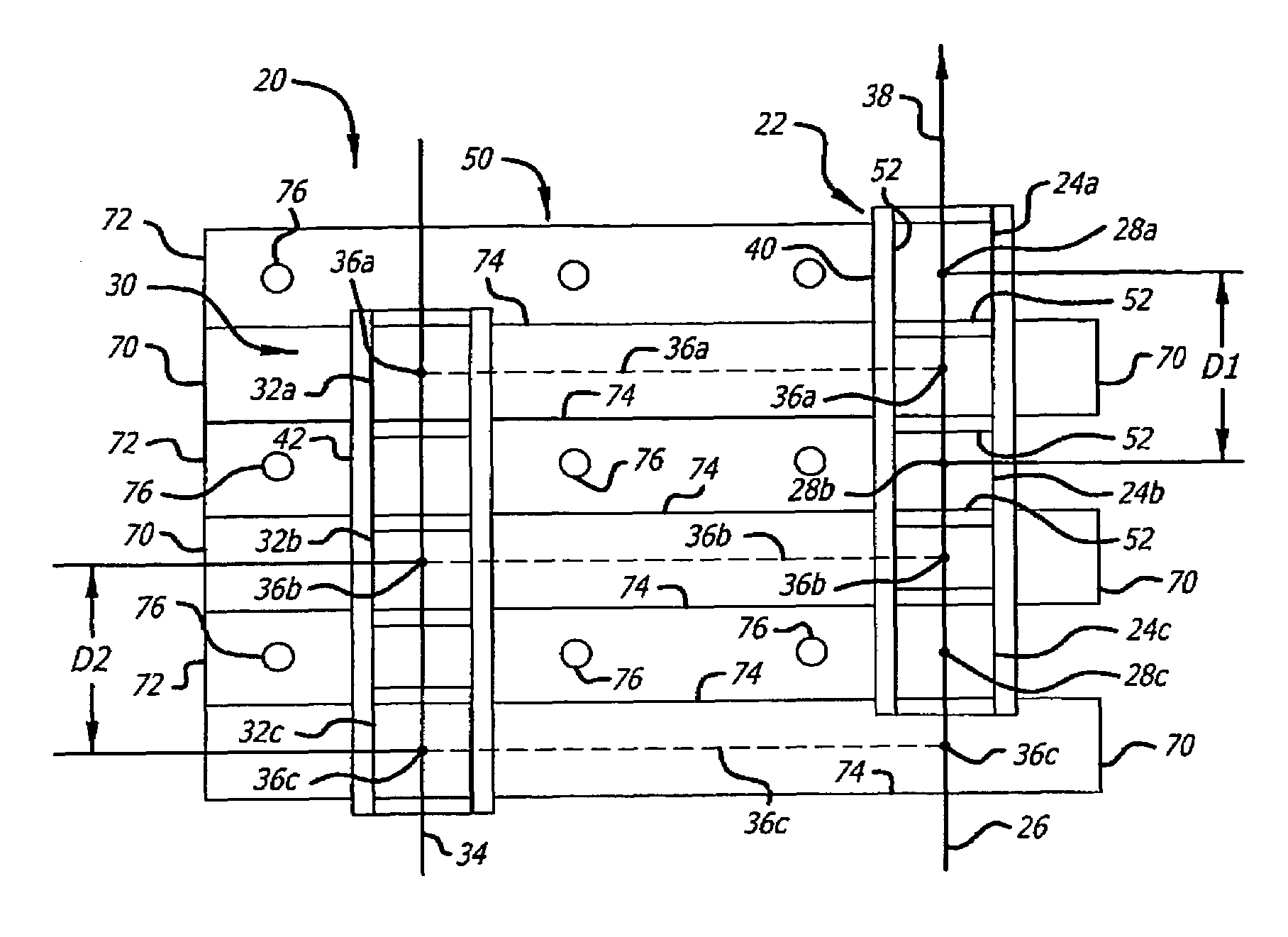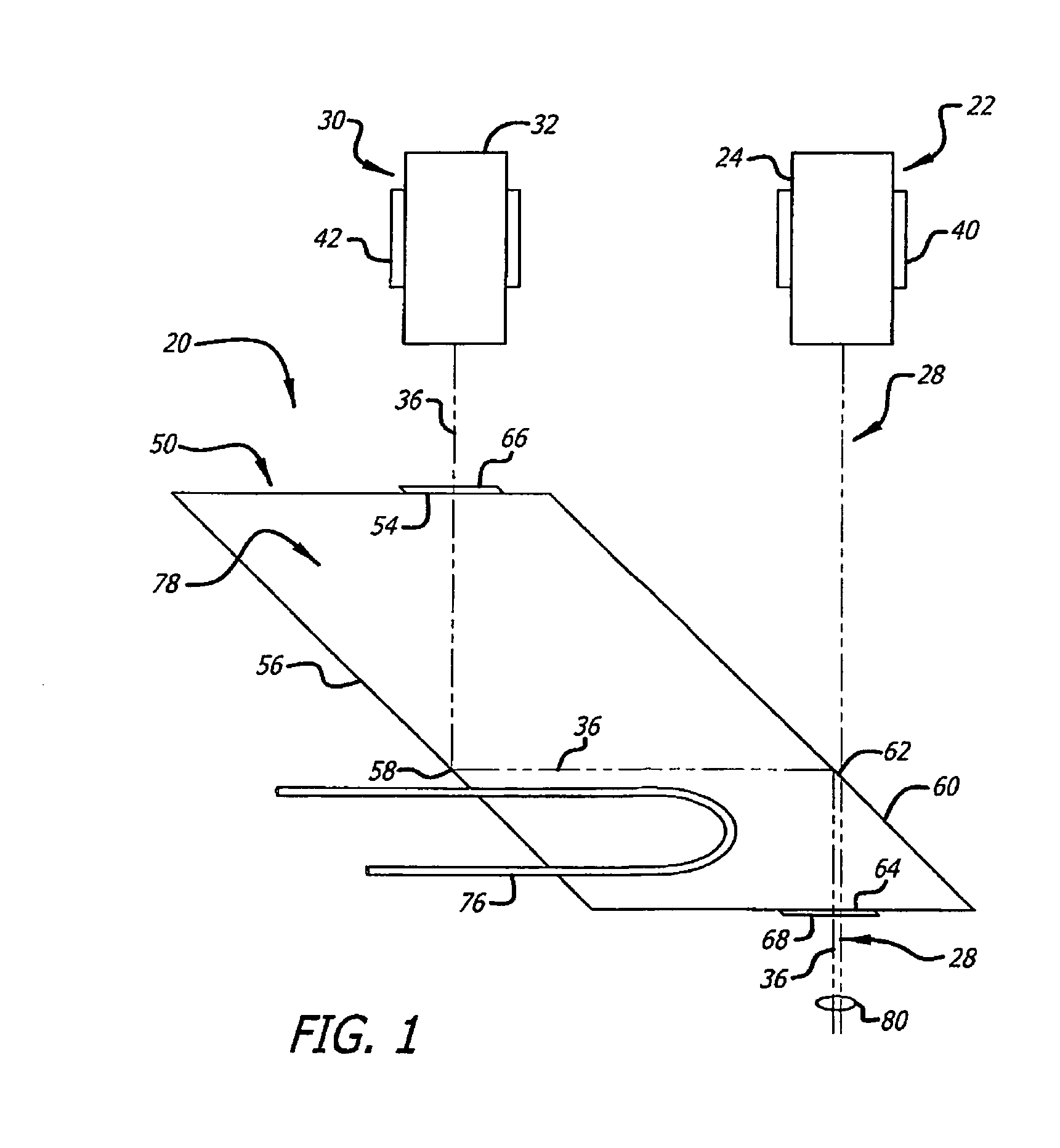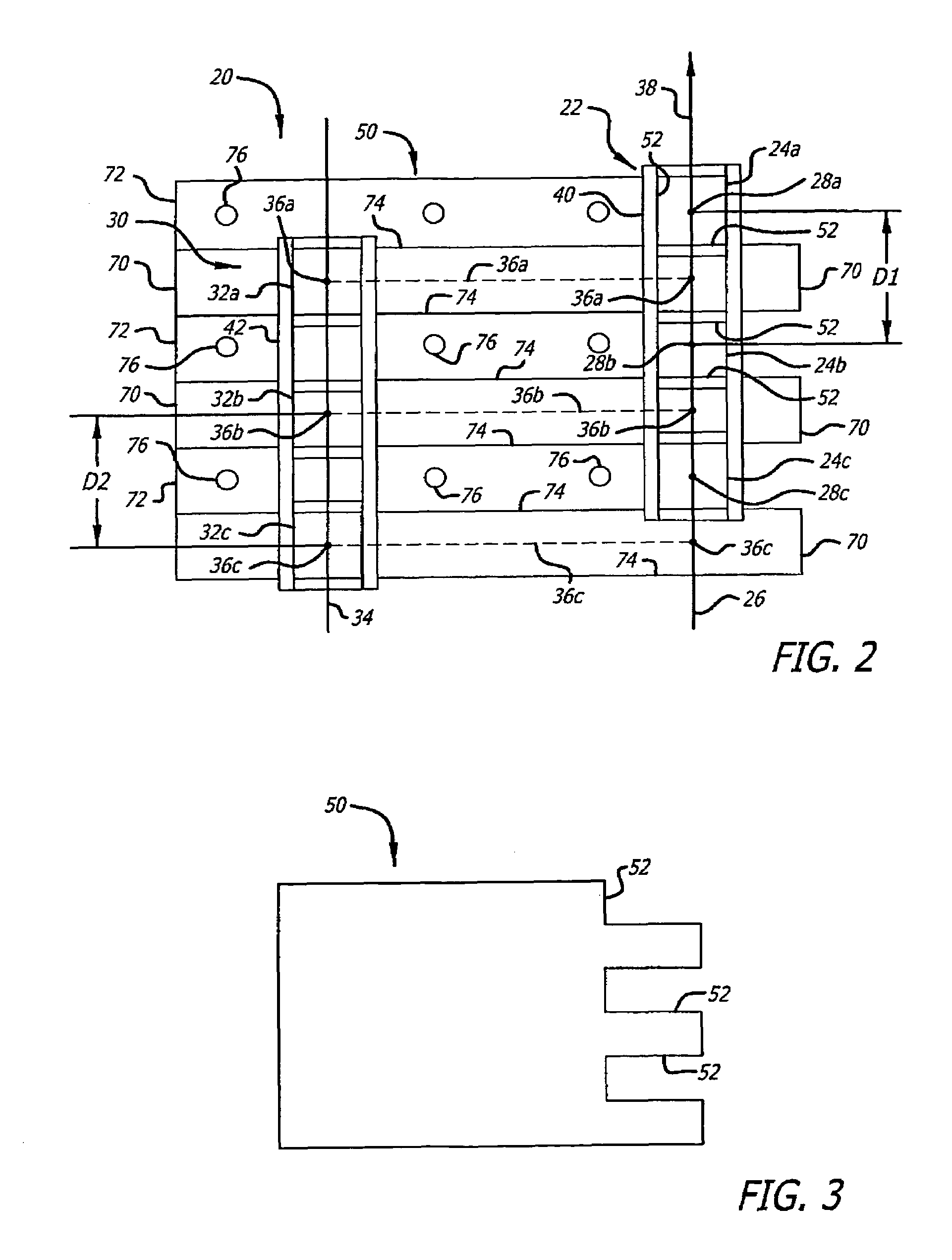Light source having spatially interleaved light beams
a technology of light beams and interleavers, which is applied in the direction of optics, instruments, optical elements, etc., can solve the problems of reducing the life expectancy of beam combiners before failure, excessive heating, and complicated spatial combiner structure, so as to reduce the heat of the optical interleaver structure, easy to manufacture, and assembled
- Summary
- Abstract
- Description
- Claims
- Application Information
AI Technical Summary
Benefits of technology
Problems solved by technology
Method used
Image
Examples
Embodiment Construction
[0015]FIGS. 1-2 schematically depict a first embodiment of a light source 20 according to the present approach, illustrating its structure and principles of operation. FIG. 1 is a plan view, and FIG. 2 is the corresponding front elevational view. Not all of the elements are visible in FIG. 1, because some elements lie directly below the illustrated elements.
[0016]The light source 20 comprises a first set 22 of first beam sources 24. In this case, the first set 22 of first beam sources 24 includes three first beam sources 24a, 24b, and 24c. The first beam sources 24 lie in a stacked arrangement in a first-beam-source plane 26 and are spaced apart by a first-source distance D1 (which may be the same for each pair of the first beam sources 24 or may be different for different pairs of the first beam sources 24). Each of the first beam sources 24 has a first-beam-source output beam 28, specifically the respective first-beam-source output beams 28a, 28b, and 28c (represented by dots in F...
PUM
 Login to View More
Login to View More Abstract
Description
Claims
Application Information
 Login to View More
Login to View More - R&D
- Intellectual Property
- Life Sciences
- Materials
- Tech Scout
- Unparalleled Data Quality
- Higher Quality Content
- 60% Fewer Hallucinations
Browse by: Latest US Patents, China's latest patents, Technical Efficacy Thesaurus, Application Domain, Technology Topic, Popular Technical Reports.
© 2025 PatSnap. All rights reserved.Legal|Privacy policy|Modern Slavery Act Transparency Statement|Sitemap|About US| Contact US: help@patsnap.com



